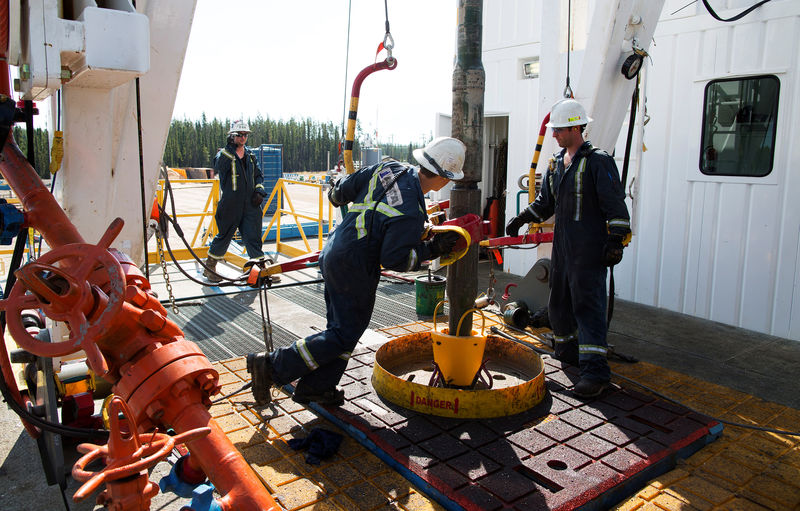(Bloomberg) -- Oil clawed back some lost ground in Asia, holding above the $20 a barrel level, after more gloomy forecasts on the demand destruction wrought by Covid-19 saw prices tumble on Tuesday.
Futures in New York rallied as much as 3.7%, after diving more than 10% on Tuesday as plunging demand and a massive supply glut overshadowed the deal struck between the world’s largest producers to curb output. The International Monetary Fund estimated that global gross domestic product will shrink 3% this year, a signal that energy demand may remain weak longer than anticipated, especially if the coronavirus lingers or returns.
In one corner of the oil market, a key timespread on the American benchmark is at its weakest level in more than a decade -- an indication of extreme oversupply.
This weekend’s OPEC+ deal to slash production by 9.7 million barrels a day amounts to the largest coordinated cut in history, but the decision doesn’t go into effect until May and is still dwarfed by the decline in oil consumption as the coronavirus pandemic keeps multiple countries in lockdown.
An American Petroleum Institute report showed that U.S. crude stockpiles surged 13.14 million barrels last week, according to people familiar. Supplies in Cushing, Oklahoma, rose 5.36 million barrels, according to the report. Energy trading giant Gunvor Group Ltd. said the world is still “overwhelmed” with too much crude and will run out of places to store it within a month.
The production deal will start removing almost a 10th of global output. Saudi Energy Minister Prince Abdulaziz bin Salman said Monday that the kingdom is ready to trim output even further if needed, but will only cut if others in the alliance reduce their supply accordingly. He also said the more bearish demand forecasts may be too pessimistic, so the alliance may not need to make deeper cuts.
The OPEC+ agreement has only served to avert a complete price collapse, analysts at Societe Generale (PA:SOGN) said in an April 14 note. They forecast Brent at an average of $30 a barrel in the second quarter, “on the premise that post pandemic normalcy returns, OPEC+ cuts are successful, and we have ‘decent’ compliance.”
©2020 Bloomberg L.P.
